The sad fate of a leopard that had wandered into a farm at Mewat, and was killed by the villagers, is the latest in the series of man-animal conflicts that have taken place in this Aravali region over the last 15 years. In another incident, a 10-feet python was caught near the Gurgaon-Faridabad road. It had created panic, as it had picked up a goat and climbed a tree. Fortunately, it was caught by the forest department. On examination, the doctors revealed that the animal had not eaten anything for the last few days, and was probably looking for food nearer the City. The conflict is not restricted to just wild animals. The City’s growing intolerance for animals is evident from the fact that various RWAs are now imposing a ban on even keeping pets in houses. While a rampant encroachment on the Aravalis has snatched the habitats of the wildlife, abandonment of pets is resulting in an increasing number of stray animals on the roads.
According to a study, the City has more than 50,000 stray dogs. Like for wildlife, no census for other stray animals is available as yet. It is shocking that Haryana, which is home to over 1,700 species of mammals, birds and reptiles—including the rare ones such as Leopard, Black Buck, Common Langur, Indian Civet, Chinkara, Blue Bull, Python, Chameleon, and Cobra—has never released any wildlife census to date. In May 2012 the Haryana Wildlife Department announced that they would carry out a census over the next two months. The information is supposedly lying with the Wildlife Institute of India, Dehradun.
The Plight of the Wild
The support system for the Millennium City lies in the backdrop of the concrete skyscrapers – in the rich Aravali forests. “If anything makes this City survive, it is the Aravali hills and their forests. While the forests cool the air, the hills stand as a wall against the desert sand coming from neighbouring Rajasthan. The green canopy of the trees also acts as a sound barrier to the noise from the adjoining industrial area in Faridabad. Most importantly, the Aravalis protect groundwater, which is the lifeline of the City. The trees direct the rainwater into the ground, through the various joints and fractures on the hillsides. So if the City wants to protect the green cover, it has to save the dwindling wildlife, which is intricately linked in this balance of nature,” says Kartick Satyanarayan, co-founder of Wildlife SOS.
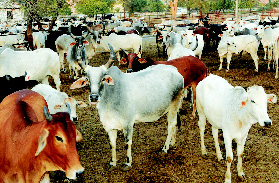
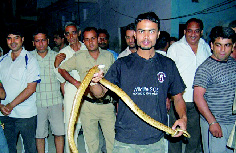
The dwindling wildlife in the Aravalis is a result of illegal mining activities in the area. Since the Aravalis is a major source of slate rock and granite, mining has been taking place in the area since the 90s. Rock blasting, stone crushing, movement of heavy vehicles and mining equipment have led to the destruction of beautiful flora and fauna. “Mine lease holders violated the licence conditions by digging down to the water table, leading to a massive drop in groundwater levels, causing severe drinking water shortage in the villages and cities around the Aravalis. They have not filled up the abandoned mine pits, and have not taken any steps for afforestation. That is why we banned mining activities in Haryana,” says K.S Khatkar, Deputy Forest Officer, Gurgaon. Kartick feels that the damage caused by mining and human intervention can never be recovered. “The extinction of tigers in the Aravalis happened solely because of human transgression. Unlike leopards, tigers are extremely possessive. They don’t like to share their habitat with humans. And they never come back,” he says.
Another reason cited for the declining wildlife in the Aravalis is the drying up of water bodies in the area. According to a recent petition filed by an RWA, against the illegal extraction of groundwater in Gurgaon, it has been revealed that over 137 water bodies have dried up in the City. Furthermore, the petition says that the state government and the local bodies don’t have any policy for the preservation or redevelopment of water bodies. Rampant poaching in the 90s is also blamed for the destruction of wildlife in Aravalis. Recounting some cases, a retired forest official says, “Poaching was widespread in Haryana during the late 80s and 90s. The most horrifying incident was when I traced a carcass of a tiger that was chopped into 11 pieces, with the head missing. I have also come across cases where poachers used nails to take out the skin of langurs and squirrels, as a sharper equipment sometimes makes holes in the skin.” He urges for strict implementation of the wildlife law to protect and preserve the endangered species in Haryana. Dr. Jain, who runs a charitable Bird Hospital in the City, informs that every month he receives at least two cases of severely injured birds. “Bird poaching is still common in some parts of Haryana, as a few tribal communities believe that eating the flesh of pigeons and eagles keeps away evils,” says Dr. Jain.
Abandoned pets
While wildlife is needed to maintain an ecological balance, pets have become important for society. They inculcate a feeling of care and responsibility. “As our society becomes more urbanised, the opportunities for contact with animals are becoming limited. Pets can help lower stress, alleviate loneliness, and improve health,” says Dr. Mahendra, Director, CGS Hospital. However, the number of abandoned pets has been increasing in the City. Expats are often blamed for leaving their pets with irresponsible owners, or on the street. Shweta Darshan, a resident of DLF Phase V says, “A Belgian couple who spent three years in our society, along with two Labradors, shifted to Germany last month. They simply left the dogs with their servant. Now these dogs create a nuisance in the society, as they are not fed properly. They are also not taken out for walks.”
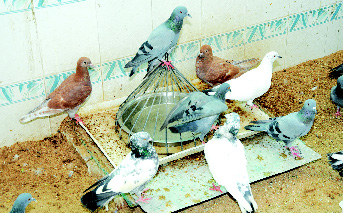
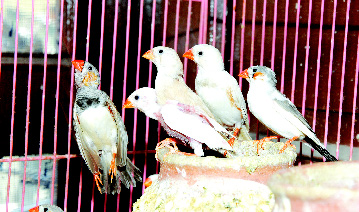
“Having a pet has become a status symbol. People have a preference for foreign breeds. The pity is that they don’t know anything about the needs of a particular breed. I think one needs to be realistic before buying a pet. Since most of the people in the City live in 2BHK or 3BHK apartments, availability of space for a pet should be kept in mind. Climate is another important aspect. I therefore suggest people to have a breed that has less fur and a long nose, so that it can perspire and breathe easily in hot weather. One must have an area of 1800 sq. feet for a pet,” suggests Dr. Mahendra. He also believes that if a dog is trained properly, it would never bark or bite anybody unnecessarily. A dog’s behaviour is completely dependent upon how it is trained.
When asked about pet cats, Dr. Mahendra says, “It is easy to understand an expression of a dog, but cats are very secretive – and sometimes, very sensitive. They need extra care, as they get into cat fights. That is why we suggest people to have cats only when they have a closed house. Moreover, cats need an air-conditioned environment.”
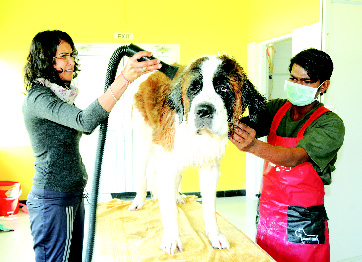
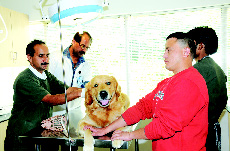
After spending five months with two pet rabbits, Manpreet realises that raising a pet is not child’s play. “I bought them because we didn’t have any kids at home. But now I want to give them away to a responsible person. I love them a lot, but I don’t find time to feed them or to take them out to a garden. It is better to give them to somebody more responsible, rather than locking them in a cage,” says Manpreet.
A Ray of Hope
Inspite of the rising man-animal conflict, there are still a few animal lovers who are working dedicatedly to make a difference. While some relate with animals at a religious level, others see animals as a source of unconditional love. The importance of animals in local culture can be seen from a recent incident. A 3.5 foot Russel’s viper was found at Haryana Raj Bhavan; it had been ordered for by the wife of a senior official for a ritual. The snake was found wearing a heavy gold chain. Also, the City is the only place in India that has a “Govardhan” temple, where cows are worshipped. Situated in Palam Vihar, devotees of Lord Krishna consider it one of the most important religious structures in the State.
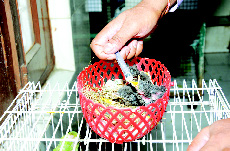
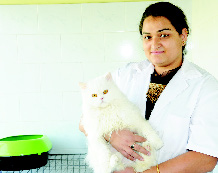
The love for animals is also apparent in the new part of the City, where pets are treated like family members. Ask Sonali, an ardent dog lover, who often organises dog parties, and has also formed a social club for dogs – “Dogs’ Day Out”. She says, “The love for dogs in the City is so strong that within 10 days the number of members increased to 90.” The group meets every second Sunday of the month, and conducts activities such as ball catching, frisbee, running, and swimming. Not just dogs, even the most neglected species in other parts of the country, like asses, have found lovers in the City. The Asswin Project, run by a British couple, Bob and Jean, works for the welfare of donkeys, that bear the burden of construction material in the City.
Like donkeys, stray cows have also found a caretaker in the City. Anumod Gagan Sharma, the man behind big projects such as the Kingdom of Dreams, laid the foundation of Gurugram Gaushala in Palam Vihar. Calling it another ‘Kingdom of Dreams’, he says, “I always wanted to do something for the welfare of cows. When we got an opportunity through MCG in 2010, we grabbed it. Today we have over 1,200 cows and 400 bulls in the centre. Initially it was a big challenge, as 4 out of 10 cows brought to the ‘gaushala’ used to die. But now the mortality rate is just one per cent.” With 12-acres of land, 24-hour CCTV surveillance, a well-maintained hospital, and green surroundings, the cowshed has been recognised as one of the best ‘gaushalas’ in India, by the Animal Welfare Department of the central government.
The centre has 70 staff members who selflessly work for the welfare of cows. “People in this City are insensitive to even cows. There are times when we get rescue calls after the wound in the cattle has rotted. In such cases we are forced to amputate the limb,” says Dr. KP Singh, a senior vet at Gurugram Gaushala. According to him the problem is that the young generation doesn’t know much about the benefits of having a cow. “There is a reason why the cow has been given so much importance in our religion. During a gas leakage incident in Bhopal, only those houses coated with cow dung escaped the tragedy. The cow is not only a source of milk, but its dung is believed to neutralise the impact of radioactive rays,” says Dr. Singh, who has been giving medical treatment to cows for over 12 years.
Wildlife SOS Centre
Gurgaon is one of the few cities to have a Wildlife SOS Centre. Unlike the authorities, the centre doesn’t release animals back into the forest. “The idea is to give protection to the animals. We can’t leave them back in the forest, where they often die because of electrocution, food poisoning, and poaching,” says Kartick. The Centre takes care of all the animals’ needs. For instance, monkeys often need something to swing on. The centre has put climbing ropes, climbing ladders, and small boxes, so that baby monkeys can play. Similarly, reptiles are kept in earthen pots and ground holes. No ready food is given to healthy animals, so as to encourage them to search for their own food. It also helps in keeping them active. There are no electric wires around.
The Centre has taken on the responsibility for the lifetime care of injured, sick, and handicapped animals. “Wild animals caught in the City generally suffer from severe dehydration. We have to therefore keep them under strict observation for at least a month. After their encounter with humans they also become aggressive. They need extra care and love. So we keep them away from humans, and within a restricted area,” informs Kartick. According to him, opening wildlife centres is the only answer to the protection of wildlife in the Aravalis.
Dr. Biswas, a Wildlife Conservationist, disagrees, and says that a wild animal can grow and prosper only in its natural habitat – the forest. According to him, “First, we need to understand that cattle are available around the forest, and not in the forest. The wild animals have therefore come out of their habitat in search of food. The authorities need to come up with a solution where cattle is 'made available' within the forest. Second, man-eating in the Aravalis is not a widespread phenomenon. Most wild animals indeed avoid human encounters. So the answer to man-animal conflict lies in spreading awareness about various wild species, and adopting some good conservation methods. It can only be done with an active involvement of our young generation.” Kartick seconds this view and says, “Whether it is a pet or a wild animal, we have to sensitise children about their importance and conservation.”
Helpline Numbers
For Cows: Call Gurugram Gaushala – 0124-2365177
For Pets and stray animals: Call People for Animals – 9811703501
For Wild animals: Call Wildlife SOS – 98719 63535
For Donkeys: Call The Asswin Project - 9810164214
First Aid for Animals & Birds
|
Animals & Birds
|
First Aid
|
|
Cattle
|
Move close to it without touching it. Tie a piece of cloth around its mouth so that it doesn’t attack you. If any of its body parts is bleeding, apply firm pressure using a wad of gauze, tissue, or a piece of clean cloth. If it is just a wound, apply a paste of turmeric and mustard oil.
|
|
Dog
|
Move close to it without touching it. Tie a piece of cloth around its mouth so that it doesn’t attack you. In case of bleeding, apply firm pressure to stop the bleeding. Tincture benzoin can also be used. In case of wounds or burns, aloe vera can be applied. If a dog is bleeding from the nose, keep it in a cool place and use an ice- pack.
|
|
Cat
|
Move close to it without touching it. Tie a piece of cloth around its mouth so that it doesn’t attack you. In case of a bee sting, which is very common in cats, a paste made of water and baking soda can be applied on the affected area. In case of bleeding, apply firm pressure using a wad of gauze, tissue, or a piece of clean cloth.
|
|
Birds
|
If it is bleeding from an open wound, make a compress with a clean, folded tissue. Hold it to the wound for a short period, until the flow slows or stops. If a bird has severe injuries due to an attack by a predator, clean the minor injuries with warm saline solution, and dab dry. Put the bird into a small, ventilated container and keep it dark and warm for about 2 hours. A mixture of 4 drops of Hypercal Tincture and 1 teaspoon of warm water can also be used.
|
Read More...